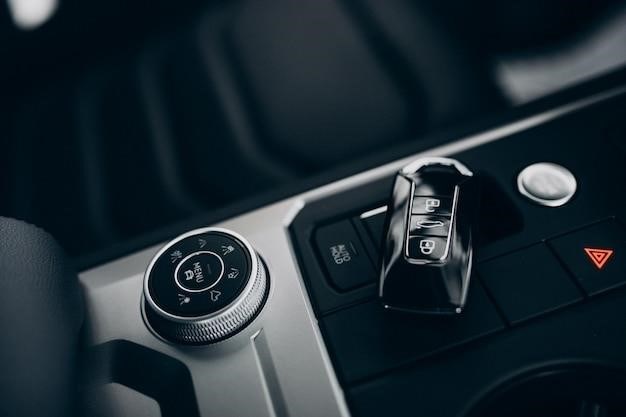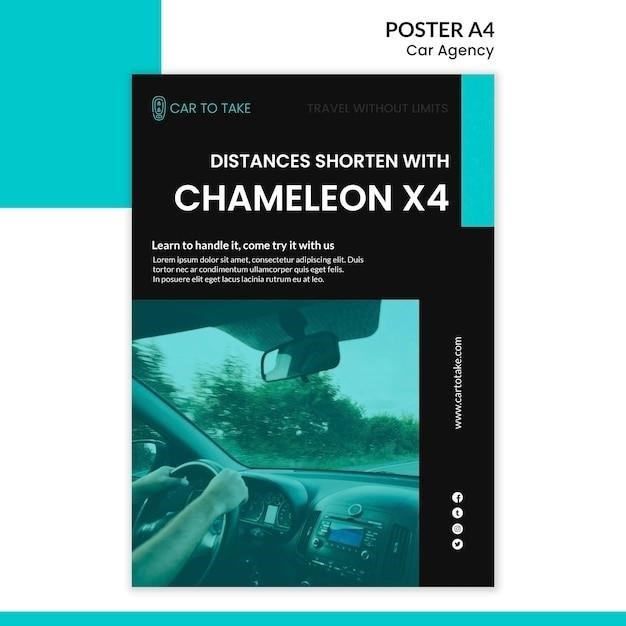The Diminishing Breed⁚ AWD Cars with Manual Transmissions
The combination of all-wheel drive (AWD) and a manual transmission offers a unique driving experience, prized by enthusiasts for its control and engagement. However, this pairing is becoming increasingly rare in the modern automotive market, a trend driven by technological advancements and shifting consumer preferences. Finding a new car with this combination is challenging; used models offer a wider but still limited selection.
The Allure of Manual AWD⁚ A Dying Breed
The appeal of a manual all-wheel-drive (AWD) car lies in the unique blend of driver engagement and enhanced control. The manual transmission provides a direct connection to the vehicle’s powertrain, allowing for precise gear selection and a more visceral driving experience. AWD, meanwhile, delivers superior traction and stability, particularly in challenging conditions like snow, rain, or on uneven surfaces. This combination creates a car that’s both fun to drive and capable in various situations. However, this driving experience is becoming increasingly rare. Manufacturers are focusing more on automatic transmissions, citing factors like improved fuel efficiency and ease of use. The complexity and cost of engineering a high-performance AWD system compatible with a manual gearbox also contribute to its decline. For enthusiasts, the dwindling availability of manual AWD cars represents the loss of a unique and rewarding driving style, leaving many searching for these increasingly rare models in the used car market.
Historically Popular Models⁚ Subaru, Mitsubishi, and More
For many years, Subaru was synonymous with the manual AWD combination, particularly its WRX and STI models, renowned for their rally-bred performance and all-weather capability. Mitsubishi also held a strong position in this market, with the Evolution series establishing a legendary reputation for handling and grip. These cars attracted a dedicated following of enthusiasts who valued their performance and all-wheel-drive traction. Other manufacturers, such as Volkswagen, offered models like the Golf R, which combined performance with the practicality of a hatchback and the all-wheel-drive grip. Even some luxury brands like BMW included manual options in their AWD performance cars. These models, often associated with performance and sportiness, offered a driving experience that wasn’t easily replicated in other segments. The availability of manual transmissions in these cars, however, has significantly decreased in recent years as automakers transition towards automated systems, leaving a void in the market for driving enthusiasts seeking this particular combination of features. The legacy of these iconic models remains, cherished by those who experienced their unique blend of performance and control.
Modern Options⁚ BMW and Toyota Lead the Pack
While the number of new cars offering both AWD and a manual transmission is dwindling, some manufacturers continue to offer this sought-after combination. BMW, for instance, has historically included manual options in some of its performance-oriented AWD models, although availability has become more limited recently. The 4 Series, in particular, has been noted for its availability with a manual transmission paired with the all-wheel-drive system. Toyota has also emerged as a significant player in this area, notably with the GR Corolla. This rally-inspired hot hatch features a potent turbocharged engine, a six-speed manual gearbox, and a sophisticated AWD system with selectable torque distribution. This model appeals to driving enthusiasts who prioritize performance, control, and the unique driving experience offered by a manual transmission in conjunction with all-wheel drive. However, the limited number of manufacturers offering this configuration underscores the ongoing decline of manual transmissions in the broader automotive market. The future of this combination remains uncertain, but these models represent a notable exception in the current landscape.

Finding Your Perfect Match⁚ Factors to Consider
Selecting an AWD car with a manual transmission requires careful consideration of budget, desired vehicle type (sedan, wagon, etc.), and performance expectations (horsepower, torque, handling). Prioritize needs to narrow the increasingly limited options.
Budget Constraints⁚ Balancing Performance and Affordability
Budget significantly impacts the search for an AWD car with a manual transmission. The combination is less common in new cars, pushing potential buyers towards the used market. Finding a well-maintained example within a specific price range requires patience and research. A $10,000 budget, as mentioned in online discussions, limits options considerably, often resulting in older models with higher mileage or requiring more maintenance. Higher budgets unlock newer, potentially better-equipped vehicles, but even then, the selection remains limited compared to automatic-only counterparts. Consider the trade-off between performance, age, condition, and potential repair costs. Prioritize reliability and maintenance history when choosing a used vehicle to avoid unexpected expenses.
Vehicle Type Preferences⁚ Sedans, Wagons, or Coupes
The choice between sedan, wagon, or coupe significantly impacts the search for an AWD manual car. Sedans offer a balance of practicality and performance, often representing a more common body style in this niche. Wagons, favored for their increased cargo space, are less frequently found with this drivetrain combination, particularly in newer models. Coupes, emphasizing sporty handling and aesthetics, might offer a more exhilarating driving experience but often sacrifice practicality and rear passenger space. Online discussions highlight the desirability of wagons, reflecting a preference for a blend of performance and utility. The available options within each body style vary greatly depending on budget and year, with older models often offering a broader range of choices. Consider your priorities – space, performance, or a blend of both – when selecting your preferred vehicle type.
Performance Expectations⁚ Horsepower, Torque, and Handling
Horsepower, torque, and handling are crucial factors when considering an AWD manual car. Horsepower dictates acceleration, while torque influences low-end power and pulling ability, both important aspects of the driving experience, especially with a manual transmission. Handling characteristics, heavily influenced by the car’s weight distribution and suspension, determine how responsive and agile it feels on the road. Online discussions reveal a strong preference for cars offering a balance of these elements, with some prioritizing raw power while others value precise and engaging handling. The budget significantly impacts achievable performance levels. Higher-performance models, such as those mentioned online from BMW and other manufacturers, generally command higher prices. Carefully assess your performance expectations against your budget to identify suitable options within your price range. Remember that older models might offer more performance per dollar but may require more maintenance.

Challenges in the Modern Market
The dwindling availability of manual transmissions, coupled with the increasing dominance of sophisticated automatic AWD systems, presents significant challenges for enthusiasts seeking this specific combination. Finding a new car with both features is increasingly difficult.
The Decline of Manual Transmissions⁚ Technological Shifts
The automotive industry’s shift away from manual transmissions is a multifaceted phenomenon driven by several key technological advancements. Modern automatic transmissions, particularly dual-clutch and continuously variable transmissions (CVTs), offer superior fuel efficiency and smoother performance compared to their manual counterparts. These advancements have made automatic transmissions more appealing to a broader range of drivers, contributing to the decline in manual transmission adoption across the industry. Furthermore, the increasing complexity of modern powertrains and emissions regulations often necessitate more sophisticated transmission control systems, leading manufacturers to prioritize automatic options for seamless integration. The added cost and engineering complexity of developing and producing manual transmissions for AWD vehicles further incentivizes automakers to focus their resources on automatic systems, ultimately diminishing the availability of manual AWD cars. The preference for fuel efficiency and ease of use by the average driver has further decreased the popularity of manual transmissions, especially in AWD vehicles.
The Rise of Automatic Transmissions and AWD Systems
The concurrent rise of automatic transmissions and all-wheel-drive (AWD) systems has significantly impacted the availability of manual AWD vehicles. Automatic transmissions, with their improved fuel economy and ease of use, have become increasingly popular among consumers. This shift in consumer preference has led manufacturers to prioritize the development and production of vehicles equipped with automatic gearboxes. Simultaneously, AWD systems have gained traction due to their enhanced safety and performance, particularly in challenging weather conditions. The combination of these two factors has created a market where the demand for manual transmissions, especially in AWD vehicles, has diminished considerably. Automakers, responding to market trends, have focused their engineering and manufacturing resources on vehicles incorporating advanced automatic transmissions and sophisticated AWD systems, leading to a decline in the production of manual AWD cars. This trend reflects a broader shift towards greater convenience and technological advancement in modern vehicles.
The Future of Manual AWD Cars⁚ A Look Ahead
The future of manual AWD cars remains uncertain. While a dedicated enthusiast base continues to champion the driving experience offered by this combination, the overarching trends suggest a continued decline in production. The dominance of automatic transmissions, driven by factors such as enhanced fuel efficiency and ease of use, is unlikely to reverse. Similarly, the increasing sophistication of AWD systems, often integrated with advanced electronic stability control and traction management, further reinforces the appeal of automatic transmissions. However, the persistence of a passionate community of drivers and a recognition of the unique performance attributes of manual AWD vehicles might lead niche manufacturers or specialized divisions to continue offering these models, albeit possibly in limited numbers or as high-performance variants. Therefore, while widespread availability seems improbable, a small yet dedicated segment of the market may sustain the production of manual AWD cars for the foreseeable future, catering to those who value the pure driving experience above all else.




